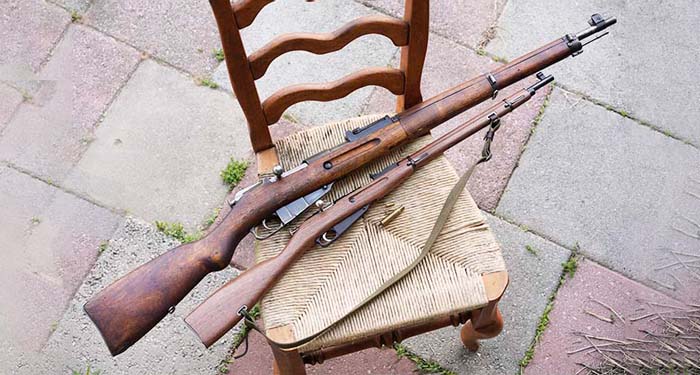Story & Photography by Oleg Volk
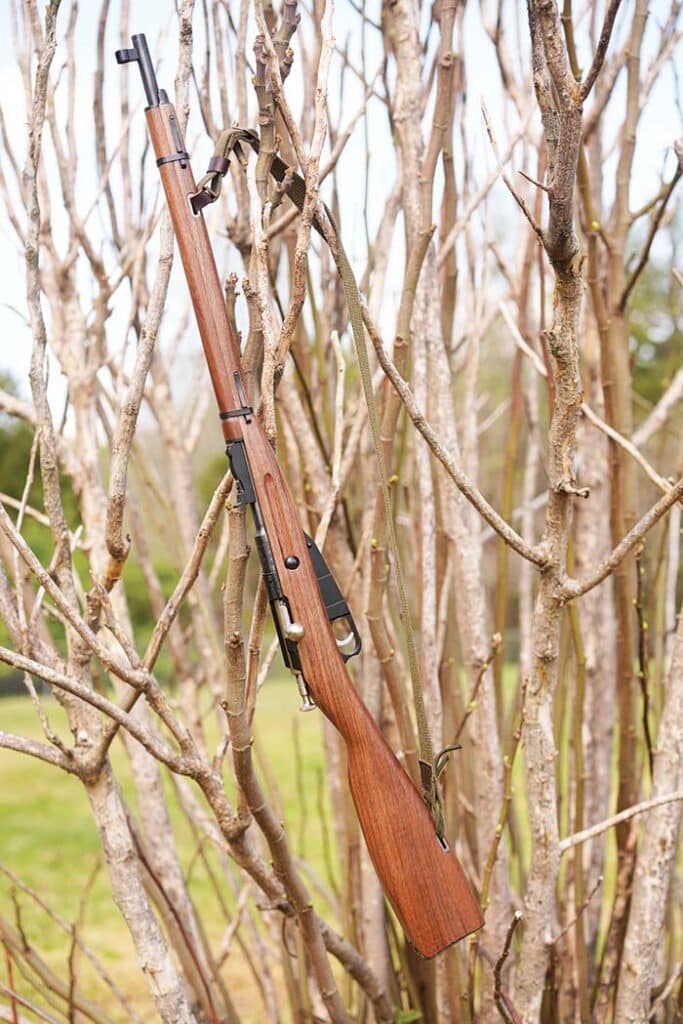
Since Russia adopted the Mosin-Nagant rifle in 1891, something like 37 million of them went into service all over the world. Few wars in Eurasia and beyond happened without at least a few Mosin 3-line rifles in use. An iconic gun of an original design, with its pluses and minuses, the Mosin-Nagant was “the rifle” to more than one East European and Asian generation. While immediately recognizable even to American kids, it is not the kind of rifle that most children or teens would want to fire. Chambered for a hard-kicking round, Mosins also require a bit of a strong hand to unlock the poorly cammed bolt after firing.
The Keystone Sporting Arms, LLC KSA9130 Mini Mosin-Nagant looks almost exactly like a scaled-down M91/30 Soviet rifle, but it owes its mechanics more to the 1920s NRA smallbore rifles like the Winchester 60A. A manually cocked single shot bolt action rifle, the Mini Mosin is a cosmetic variant of the popular Crickett® kids rifle designed to teach history at the range.
In some ways, the Mini Mosin is incredibly authentic. It features a nicely finished stock with metal fittings, as well as a front sight hood, metal-reinforced eyelets for the scaled-down reproduction sling, a trigger guard combined with a dummy magazine, and bolt handles attached to the safety lug, making it look just like the original. The rear sight base looks similar to the original from the side but features a battle sight instead of a range slider. Both rifles have finger-grooves in the stock.
Inside, the differences are greater. Unlike the magazine-fed Mosin with a stripper clip receiver bridge cutout, the Mini Mosin is purely a single shot rifle. The original bolt was rather complicated as it cocked on opening, which added to its already laborious unlocking and extraction. The Mini requires manual cocking with the spring-loaded knob. And opening the bolt with the action cocked requires manual de-cocking first. This design is more in line with the youth rifles of the 1920s and 30s, which were made this way both for safety and for simplicity of manufacture. kids were supposed to cock the action right before firing.
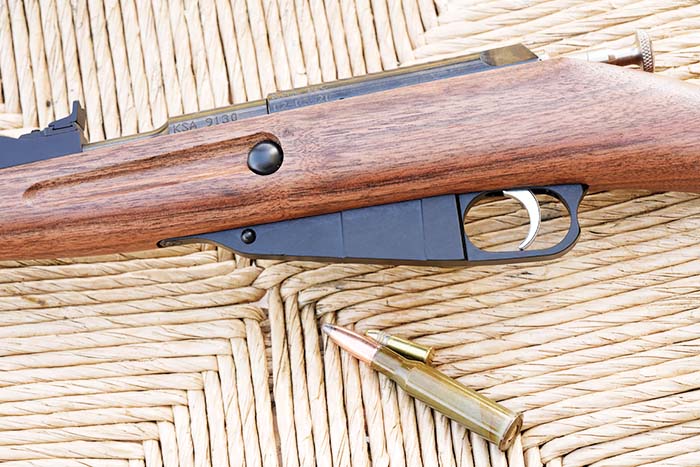
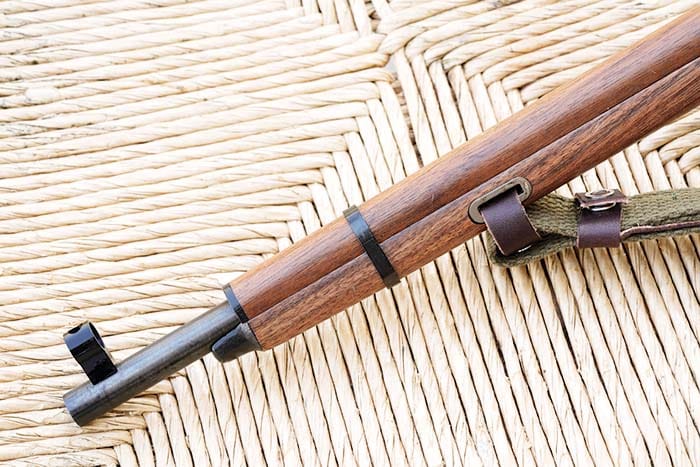
The sights are easier to use on the rimfire clone: both elevation and windage are adjusted on the rear sight with a small, common screwdriver. Turning the elevation screw adjusts the sight directly and proportionally. The windage is adjusted by hand, with the screw only retaining the rear sight blade. Doing that incrementally can be difficult. On the original Mosin-Nagant, either a sight pusher or a hammer was needed for adjusting the windage, and a dedicated tool was needed for the elevation. While the Mini is not supplied with a cleaning rod, it is almost a needless accessory on that gun. Its chamber stays quite clean, and the bore can be swabbed with a pull-through.
The Mini Mosin weighs only 40oz with the sling attached. The original M91/30 was 8.8lbs, three and a half times heavier than its mini variant. The original barrel was just over 29 inches, while the tiny Mini Mosin has a proportional 20-inch tube which dulls the report with subsonic ammunition to a very mild level. The buttplate is traditionally solid, but it is a lot easier to stand with a cartridge developing 1/25th of the 7.62×54’s muzzle energy.
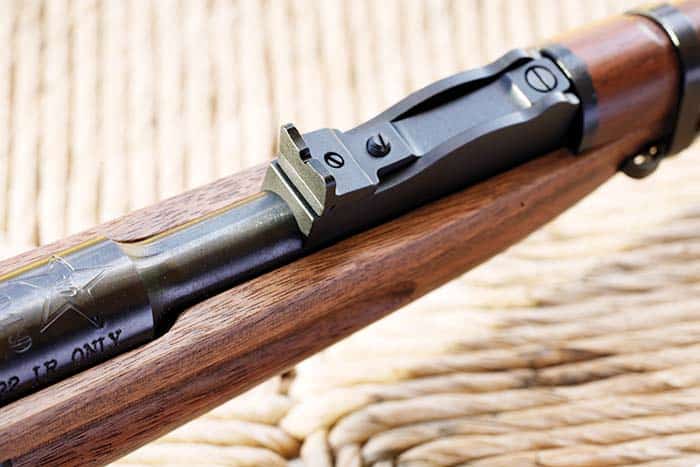
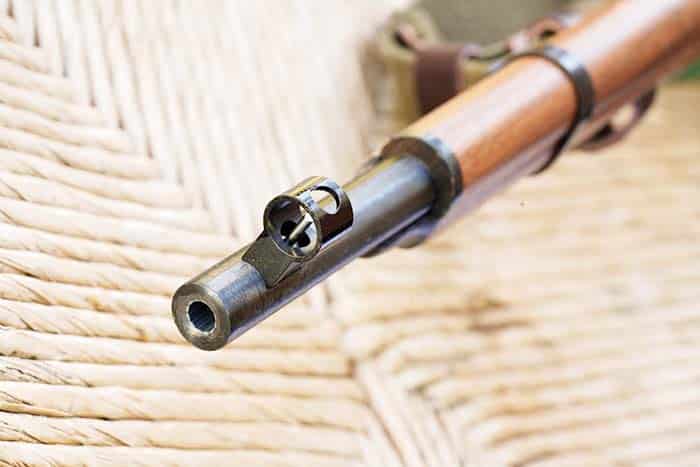
While the original Mosin has two locking lugs on the front of the bolt, plus a safety lug under the bolt handle, the Mini does not develop nearly as much chamber pressure, so it uses a single lug combined with the bolt handle. Bolt removal is the save with both designs. It is retained by the sear, so holding down the trigger allows the bolt to exit aft. While the Mosin bolt must be pulled apart for cleaning, the Mini bolt can be just dunked in cleaning fluid.
Shooting the Mini Mosin is fun for kids and adults alike. The stock is short, with an 11.5” length of pull. It is fit perfectly for kids, while adults can still use it with a square stance. The thin neck of the stock has an inset channel for the lower third of the striker so that it cannot catch the shooter’s hand on firing. Considering that Keystone Sporting Arms, LLC also owns Revolution™ Stocks, a maker of high-grade wood and laminate stocks, this kind of refinement is welcome but not surprising. Its light weight and neutral balance make it feasible for even small children, but younger kids (under the age of seven or eight) may require assistance in cocking the hammer. A spring-loaded loading ramp allows just dropping a cartridge into the action and closing it, at least with round nose bullets. With hollow point ammunition, it is better to start the bullet into the chamber first.
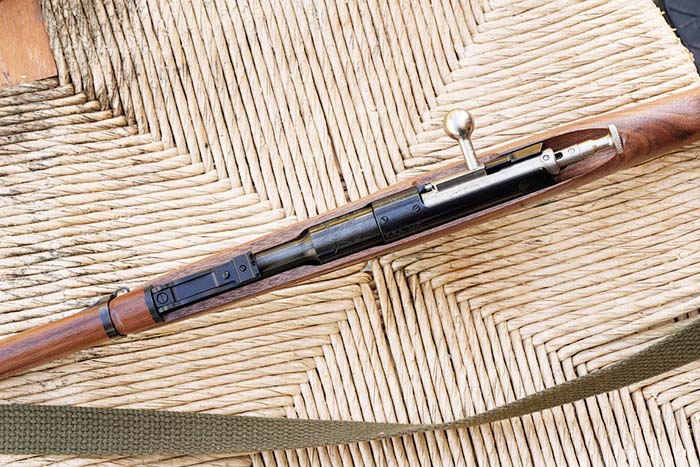

In testing, we shot about 150 rounds of 38gr Aguila subsonic ammunition, and 80 rounds of Remington Golden Bullet (bulk). We did not experience any failures to fire or eject. Accuracy was similar with both, suggesting that the sights and the 4.5lb trigger pull was a limiting factor. With subsonic ammunition, firing was done out to 35 yards in a windless hollow. The rifle was sufficiently accurate from field positions to knock down a pop can every time. Using the sling for support helped without any obvious horizontal deflection from the tension. The report was very mild, the recoil was almost absent. With supersonic 40-grainers on a windy day, I got more of a realistic result: the rifle stayed on a 4-inch plastic ball at 60 yards. Further out, I could get hits on full-size silhouettes, but performance on point targets became less consistent. The report was noticeably louder.
The Mini Mosin’s rounded rear notch almost made a perfect overlap with the circular front sight protector hood, aiding in alignment. I couldn’t move my face any further forward to perfect that alignment due to the extending cocking knob touching the lens of my safety glasses. The stainless sight pin, while nicely visible, had a vertical highlight that moved depending on the position of the sun. With the sun on the side, the sight pin seemed to be placed further in that direction, possibly affecting windage at longer distances. With the sun above or behind the shooter, the sight picture was perfect. Snap shooting reactive steel at distances of 15 to 30 yards was a breeze. The lessons of Project Appleseed™ came in handy, though the extreme light weight of the gun made it easier to avoid twisting it by wrapping the thumb around the neck of the stock. I really wish I had one as a kid!
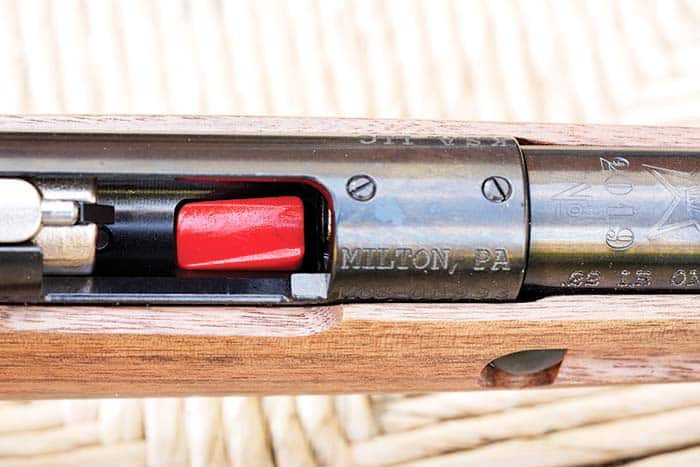
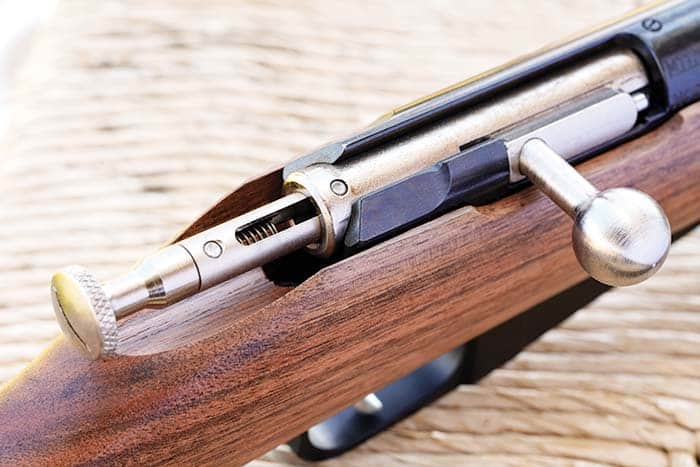
The Mini Mosin’s receiver is drilled and tapped for Picatinny rails, allowing for additional accessories to be mounted to the rifle. The straight bolt handle limits the size of the optic, but a micro red dot in a closed tube form factor would complement this rifle making it a little easier to aim. It probably wouldn’t even require a cheek riser on the stock.
Keystone Sporting Arms, LLC originally announced plans to make variations looking like American, British, French, German, and Japanese World War II bolt action rifles. The continued popularity of the Mini Mosin, first introduced in early 2019, suggests that these plans may come to pass sooner rather than later.
This article first appeared in Small Arms Review V25N5 (May 2021)



